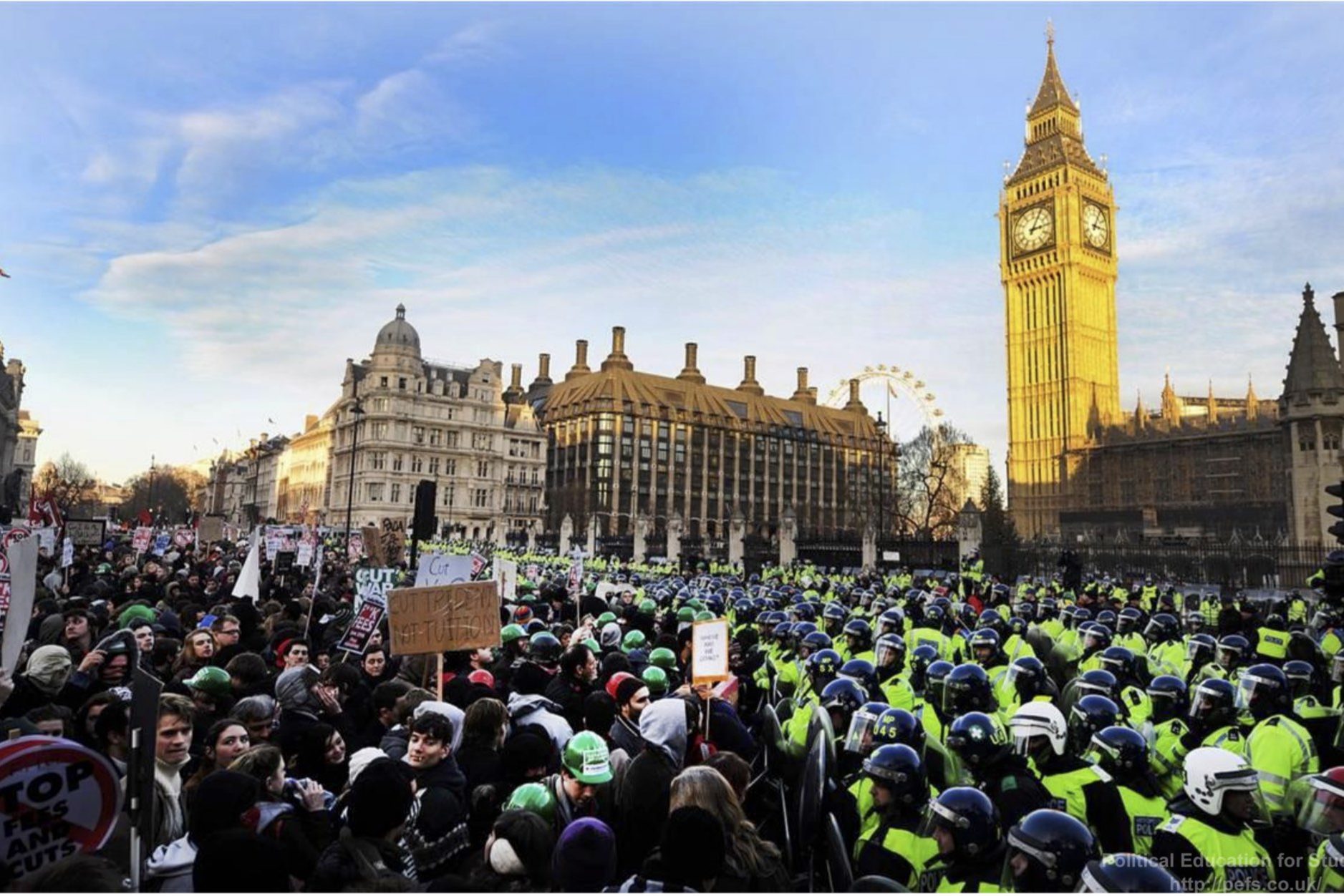 Starting with the Arab Spring, recent years have witness waves of protests sweeping across the countries and continents sometimes resulting in political and governmental change. During the time of protests, social media has been used not only for casual everyday communication but also mobilising the public, organising protests and spreading information which is vital in the absence of reliable official information sources. Much media attention therefore has focused on this improved usage of social media to provide near real time reports on these protests.
Starting with the Arab Spring, recent years have witness waves of protests sweeping across the countries and continents sometimes resulting in political and governmental change. During the time of protests, social media has been used not only for casual everyday communication but also mobilising the public, organising protests and spreading information which is vital in the absence of reliable official information sources. Much media attention therefore has focused on this improved usage of social media to provide near real time reports on these protests.
With the increased Internet speed and improved connectivity, people do not only share text based posts but also they share visual media such as photographs and videos. In my recent project, in collaboration with Dr Tobias Preis and Dr Suzy Moat, we asked whether online photographs can serve as a valuable new source of measurements on human behaviour during such protest events. To answer this question, we investigate the photographs uploaded to photo sharing website Flickr to identify protest outbreaks around the world.
We analysed a large corpus of metadata on 25 million geotagged pictures taken and uploaded to Flickr in 2013. For each week and each of the 244 countries and regions we covered in the study, we determine how many pictures were uploaded with the word “protest” in 34 different languages either in the description, title or in the picture tag. Patterns which we can visually identify reflect the known major protest events in 2013, such as the ones in Turkey and Brazil in June 2013.
To check if we can find any evidence that change in the number of protest tagged Flickr pictures correspond to the number of protest outbreaks, we need data on when and where the protests have occurred. As in the other civil unrest studies, we use newspaper reports as a proxy for ground truth. For each of the 244 countries and regions, we retrieved weekly number of articles in the online version of The Guardian in 2013. We deem an article as protest related if it is tagged with the word “protest” and deem an article as covering news related to one of the 244 places analysed, if it is tagged with the country and region’s name. Again, in Figure 1, visual inspection suggests that we can identify some key similarities between “protest” labelled Flickr pictures and “protest” labelled articles in The Guardian such as an increase in “protest” labelled Flickr photographs in Brazil and Turkey in June 2013.

Figure 1: Locations of (Left) Flickr photographs labelled with “protest” and (Right) reports of protests in the online edition of The Guardian articles.
To determine whether we can find statistical evidence that there is a link between “protest” tagged Flickr pictures and “protest” related The Guardian articles, we build a logistic regression panel model considering both datasets at weekly granularity. Our results suggest that a greater number of “protest” labelled Flickr photographs in a given country and place corresponds to a greater proportion of protest related articles in The Guardian from that area. Our findings are consistent with the striking hypothesis that data on photos posted to Flickr may help us identify protest outbreaks around the world. With this study, we underline the potential value of photographs uploaded to the Internet as a source of global, cheap and rapidly available measurements of human behaviour in the real world.
[one_third valign=”top” animation=”none”]

[/one_third]
[two_third_last valign=”top” animation=”none”]
If I managed to catch your interest, you can find the full paper at: http://journals.plos.org/plosone/article?id=10.1371/journal.pone.0150466
Have any questions or comments? Please feel free to email me: m.alanyali@warwick.ac.uk or get in touch via www.mervealanyali.com where you can also find detailed explanations on my projects.
Please visit our group’s website for the list of other fascinating projects we have been working on: http://datasciencelab.co.uk/
[/two_third_last]
[one_third valign=”top” animation=”none”]

[/one_third]
[two_third_last valign=”top” animation=”none”]
Merve Alanyali is a PhD candidate at Warwick Business School. Her work focuses on analysing large open data sources with concepts from image processing and machine learning to understand and predict human behaviour at a global scale.
In 2013, Alanyali with Tobias Preis and Helen Susannah Moat used Financial Times data to quantify the relationship between financial news and the stock market. Her work has been featured by television and press worldwide including coverage in the Financial Times and Bloomberg Business. Recently, she worked with geotagged Flickr data to track protest outbreaks around the world.
Alanyali is currently a holder of Chancellor’s International Scholarship at University of Warwick. She is undertaking various data science related teaching roles as well as organising workshops. She was awarded a double degree in Complex Systems Science MSc programme by University of Warwick and Chalmers University of Technology, Sweden and draws on an interdisciplinary background in computer science, complex systems and behavioural science. She serves as a reviewer for PLOS ONE and Pivigo Data Science Ambassador.
[/two_third_last]

